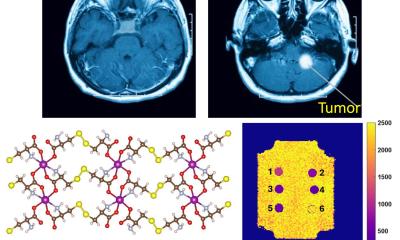Breakthroughs in musculoskeletal imaging outlined at ECR 2012
The fact that between 60% and 80% of people are expected experience some form of back pain at some point in their lives puts the importance of advances in imaging of the spine into context. A number of developments in imaging of the spine and peripheral nerves were outlined at a musculoskeletal scientific session at ECR 2012 in Vienna on Saturday morning.

Areas covered included diffusion-weighted MR imaging of the spine; sodium imaging of the lumbar intervertebral disc; multi-echo MRI for muscle fat quantification; correlation between strength of paraspinal lumbar muscles, muscle degeneration and diffusion properties; and comparison of 3D isotrophic turbo spin-echo SPACE sequence versus conventional 2D sequences. Nine papers from research groups in China, Korea, Austria, Germany, Switzerland and France were presented at the session.
Dr Iris Noebauer-Huhmann, from the Department of Radiology at the University Hospital Vienna, detailed her team’s paper on “sodium imaging of the lumbar intervertebral disc at 7 Tesla: correlation with T2 mapping and modified Pfirrmann score at 3 Tesla.”
In conclusion she said that sodium imaging at 7T was feasible and added: “In the future, if it proves that sodium will become a reliable chemical biomarker, it can help us to understand the biochemical properties of healthy and ageing discs.”
Dr Sungwon Lee from the Department of Radiology at St Mary’s Hospital, Seoul, Korea, spoke about work on MR imaging of the lumbar spine and how her team had compared 3D isotropic turbo spin-echo SPACE sequence versus conventional 2D sequences at 3.0T.
She said that compared with conventional 2D-TSE, 3D-T2-weighted-TSE SPACE sequence had similar sensitivity in detecting spinal stenosis, higher correlation with symptoms, higher inter observer agreement, had shorter overall acquisition time and that it was possible to reformat images retrospectively.
Other work from the University Hospital, Bonn, Germany, looked at the influence of weight-bearing and lumbar lordosis on the dural sac in patients with severe stenosis of the lumbar spinal canal and from Wuhan in China, high-resolution magnetic resonance imaging of the brachial plexus using an isotropic-enhanced scan of 3D-STIR sequence.
Researchers from the University Hospital Zurich looked at multi-echo MRI for muscle-fat quantification in patients with low back pain and compared it to spectroscopy.
Dr Michael Fischer from Department of Diagnostic Radiology said: “Mutli-echo 3D MR imaging offers simple and accurate calculation of FSF compared to MRS as the standard reference. “It also offers evaluation of MFC and its distribution in large volumes in a time effective and less technically demanding fashion, suitable for daily clinical settings as compared to MRS.” By Mark Nicholls.
04.03.2012











